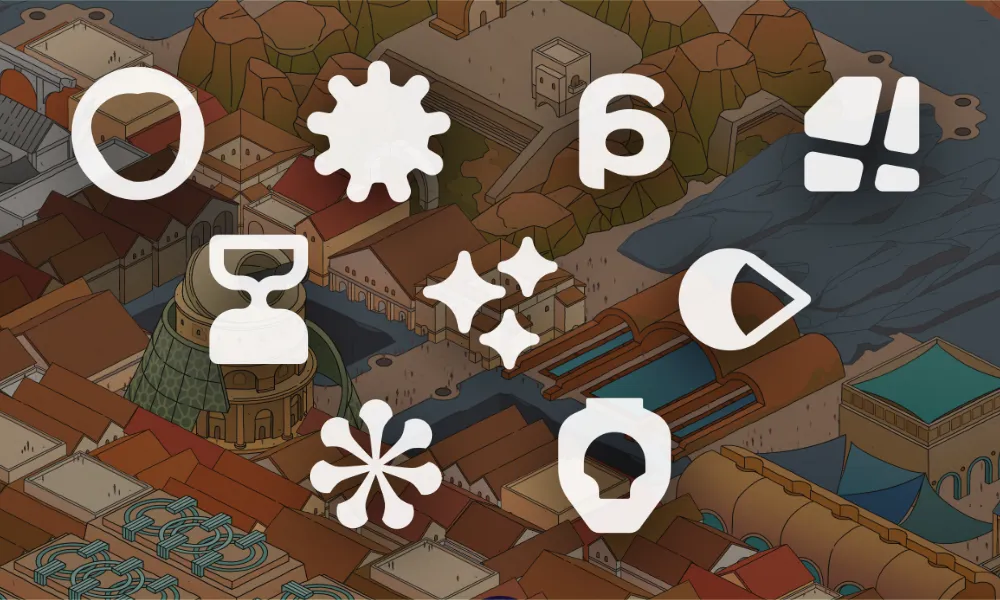Removing The Scaffolds
Amberspire Design Diary #13
Since the design diaries have been roughly organized chronologically, this is a sort of reflection of all the previous big idea work and fleshing all of it out. See the other design diaries, wishlist the game, or subscribe to our newsletter.

The past several design diaries have been a tour of all the big ideas in the game. Once those start to feel mostly right, the next step is to flesh all of it out. Frequently in this phase you invalidate some of those ideas or find better versions, so it's an important step in the process. Often the game will feel suddenly much closer to being complete, even with a lot more to do.
The Rest of the Owl
I started with resources and buildings, which is naturally a very circular pair of ideas. What were the actual resources the game concerns the player with? That depended on the buildings in the game and what they produced, which asks what buildings naturally arise out of those resources. It feels like hand carving a sphere out of a larger sphere - doable, very iterative, and you have a lumpen mistake for the majority of the time.
My overall guideline for the resources is they should move away from material goods pretty quickly and smoothly transition into abstract concepts. Things like brick, metal, and energy are important concepts for a city builder to have, but I wanted them to feel like a small segment in the kaleidoscope of things cities could 'make'. Cities are not just buildings and streets, they are what people do in the negative spaces.
It’s at this point I settled on ideas like glow, horizon, insight, and ritual. These are resources that can be produced and manipulated by the player just like brick or metal, they don’t necessarily have a fixed definition. How the game produces and consumes them gives clues to how I conceive of them, but there’s more than enough room for players to bring their own interpretations. The goal is also not to represent every possible concept as a resource from a building. The game takes a certain point of view within the fictional world of Amberspire as to what this city can produce, and for example influence is a broader idea that is not a distinct item coming out of one building.
So figuring the buildings and resources was a tandem process. The buildings should represent the wide variety of things people might do in a city, but like any game there has to be limitations, so there are some omissions that might be restored later. Buildings are more concrete than the resources, but the pairings do a lot to describe what happens there. An Amphitheater produces music, gathering, and starlight; the Salon produces intrigue, shadow, and ash. The Temple can provide influence in exchange for ritual, music, ash, and shadow.
More buildings: Library, Garden, Salon, Creche, Necropolis, Palace, Chapel, Hideout, Scrapyard; all are dice rolling buildings that produce resources. Temple, Fort, Arena, and the Bazaar provide influence for resources.
Beyond which resources buildings can exchange for influence, how many resources should a building be able to trade for influence? Actually, how many resources should there be altogether?
Scaffolds
In various design diaries I've talked about 'scaffold' designs, simplistic rules and mechanisms that do a functional job moving inputs and outputs around for the player while other ideas are being worked on. This is the moment that the earliest scaffolds start to come down. To explain a bit more: the game has been designed with a vague sketch that there will be 'a lot of resources' produced by 'a lot of buildings', and used for 'a currency-like number', and so on. Ideas like dice rolling can be worked on knowing that the resources will be used somehow. Then the later ideas are developed, knowing that there will be lots of resources produced by dice.
Now the process is to actually define all those buildings and resources. In this first step, I just wrote down all the unique and interesting resources I could think of, and which came to a list of about 36 ideas. Coincidentally, the number of buildings was about the same, though neither of these are final yet.
Because this process is so circular, this first number is sort of a shot in the dark. It might be too high or too low, but the carnival ride is spinning and you just have to pick a spot to hop on. Testing and iteration will lead you to the ideal spot eventually. Reading this you might also compare it to other city builders and think that's not all that much, but there is a key element to Amberspire: no building is a straight upgrade to any other building. Each one is unique in its output, construction, and utility; once you reach the final tier and unlock every building, all of them have their uses. This creates a huge variety in strategy, and in this case there might be too many buildings.
That's it for now! This is just the first impulse on a long and iterative process that is extending into today, so there's plenty to come on this front.